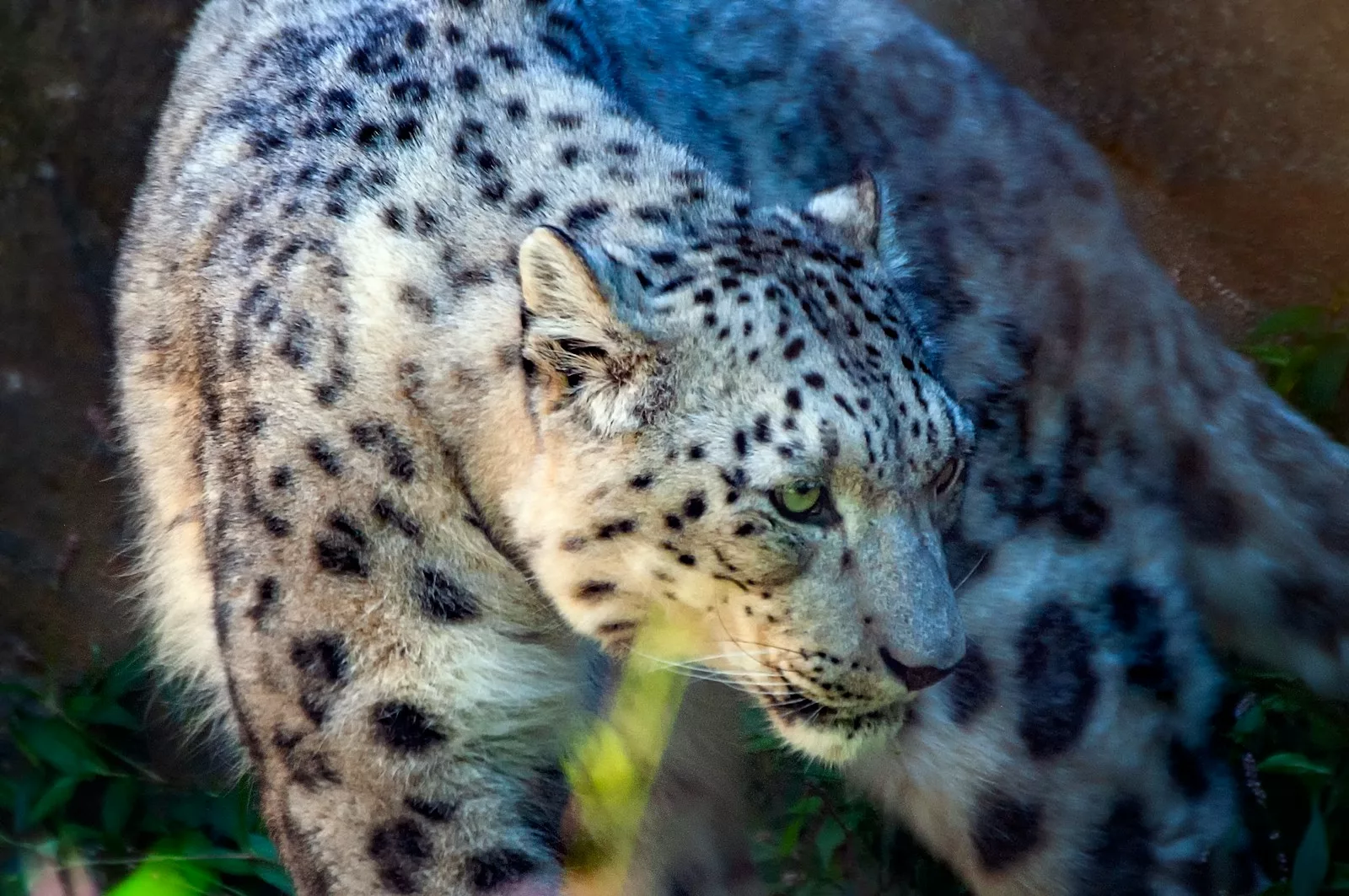Snow leopards (Panthera uncia), often referred to as “ghosts of the mountains,” are among the most enigmatic and fascinating big cats on Earth. Adapted to survive in some of the harshest environments on the planet, these elusive predators possess an array of biological, behavioral, and survival traits that make them truly unique.
From their incredible physical adaptations to their vital role in fragile ecosystems, snow leopards are a testament to nature’s ability to thrive in adversity. This article will explore 15 astonishing facts about snow leopards, shedding light on their biology, survival strategies, and the challenges they face in their remote, high-altitude habitats.
1. Snow Leopards Are Built for Extreme Cold
Every aspect of a snow leopard’s body is designed to withstand the freezing temperatures of the mountainous regions where they live. Their thick fur, which can grow up to five inches long, provides exceptional insulation against the cold.
In addition to their dense coat, snow leopards have a woolly underlayer that traps heat and keeps them warm. Their broad, fur-covered paws act as natural snowshoes, distributing their weight and allowing them to walk on snow without sinking. Even their short, rounded ears are an adaptation to minimize heat loss, ensuring they remain warm in temperatures that can drop as low as -40°F (-40°C).
2. They Breathe Thin Air Efficiently
Snow leopards inhabit high-altitude environments, typically between 9,800 and 17,000 feet (3,000 to 5,200 meters) above sea level. At these elevations, oxygen levels are significantly lower than at sea level, presenting a challenge for most animals.
To survive in these conditions, snow leopards have evolved large nasal cavities that warm and humidify the cold, thin air before it reaches their lungs. Their powerful chest muscles and highly efficient lungs further enable them to extract maximum oxygen, allowing them to maintain their energy levels while navigating steep and rugged terrain.
3. Their Tails Are Insulation and Balance Tools
Snow leopards’ long, bushy tails, which can measure up to 40 inches (100 cm), are not just beautiful—they serve multiple purposes essential for survival. Their tails act as a counterbalance when leaping across cliffs or navigating rocky outcrops, helping them maintain stability.
Additionally, their tails double as a blanket during cold nights. Snow leopards often wrap their tails around their bodies, particularly their faces, to retain warmth while resting. This dual-purpose adaptation makes their tails one of their most vital physical features.
4. They Have Incredible Jumping Abilities
Snow leopards are among the most agile big cats, capable of leaping up to 50 feet (15 meters) in a single bound. This extraordinary jumping ability allows them to traverse their rocky, mountainous habitats with ease, making them highly effective ambush predators.
Their strong hind legs and flexible spines provide the power and range needed to pounce on prey from great distances, often from above. This ability also helps them evade predators or cover large gaps between cliffs and ridges.
5. Snow Leopards Are Silent Predators
Unlike other big cats, snow leopards cannot roar. This is because their larynx, or voice box, lacks the specialized structure required to produce roaring sounds. Instead, they communicate through a range of quieter vocalizations, including growls, hisses, purrs, and yowls.
Their inability to roar doesn’t hinder their hunting ability. In fact, their silent stalking behavior is an asset, allowing them to ambush prey without making a sound. This stealthy approach is vital for survival in their rugged, resource-scarce habitats.
6. They Are Apex Predators in Their Ecosystems
As top predators, snow leopards play a crucial role in maintaining the balance of their ecosystems. They primarily hunt herbivores like blue sheep (bharal), Himalayan ibex, and argali sheep, keeping these populations in check and preventing overgrazing.
By regulating herbivore numbers, snow leopards indirectly support plant growth and biodiversity in their ecosystems. This cascading effect makes them a keystone species whose presence benefits the entire food web in their habitat.
7. Their Camouflage Is Perfectly Designed
The snow leopard’s fur is not only warm but also provides exceptional camouflage. Its pale-gray coat, adorned with black rosettes and spots, allows it to blend seamlessly into the rocky terrain and snow-covered landscapes of its mountain habitat.
This camouflage serves two purposes: it enables snow leopards to approach prey undetected and helps them avoid detection by potential predators or human hunters. This evolutionary advantage is one reason why snow leopards are so difficult to spot in the wild.
8. They Have Blue-Green Eyes
Unlike most big cats, which typically have golden or amber eyes, snow leopards possess striking blue-green eyes. This unique eye color is a rare trait among felines and adds to their mystique.
Their keen vision is a vital tool for spotting prey in the vast, open landscapes of their mountainous homes. Combined with their ability to detect movement from great distances, their eyesight makes them formidable hunters.
9. They Are Solitary by Nature
Snow leopards are solitary creatures, spending most of their lives alone. Each individual establishes a large territory that can span hundreds of square miles, depending on prey availability. They mark their territories with scent markings and scrape marks to ward off rivals.
Interactions between snow leopards are rare and usually occur during mating season or when a mother is raising her cubs. This solitary lifestyle reduces competition for resources in their sparse and challenging environment.
10. They Are Expert Climbers
Snow leopards are exceptional climbers, a skill that is essential for surviving in their steep, rocky habitats. Their muscular build, sharp claws, and flexible limbs allow them to scale vertical cliffs and descend steep slopes with ease.
This climbing ability not only aids in hunting but also helps them escape potential threats. By navigating terrain that other predators cannot, snow leopards secure a distinct advantage in their environment.
11. Cubs Are Raised Exclusively by Their Mothers
Female snow leopards give birth to litters of one to five cubs after a gestation period of approximately 90 to 100 days. Cubs are born blind and helpless, relying entirely on their mother for warmth, protection, and nourishment.
The mother raises her cubs alone, teaching them essential survival skills such as hunting and navigating their environment. Cubs stay with their mother for about 18 to 24 months before venturing out to establish their own territories.
12. They Are Vulnerable to Habitat Loss
Snow leopards face significant threats from habitat loss due to human activities such as mining, infrastructure development, and livestock grazing. These activities reduce the availability of prey and force snow leopards into closer contact with human populations, increasing the risk of conflict.
Conservation efforts focused on habitat protection and restoring wildlife corridors are critical for ensuring the survival of this iconic species.
13. Climate Change Threatens Their Future
Climate change poses a growing threat to snow leopards by altering their mountainous habitats. Warming temperatures cause the tree line to shift upward, reducing the availability of open alpine meadows where snow leopards hunt.
Additionally, changes in precipitation patterns affect the availability of water and vegetation, impacting the populations of prey species. These cascading effects highlight the urgent need for climate action to protect snow leopards and their ecosystems.
14. Their Fur Is Highly Prized
Snow leopards’ thick, patterned fur has made them a target for illegal poaching. Despite international protections, demand for their pelts persists in black markets, posing a serious threat to their populations.
Efforts to combat poaching include increasing law enforcement in key habitats and promoting alternative livelihoods for communities that rely on hunting for income. Public education campaigns also aim to reduce demand for snow leopard products.
15. Conservation Efforts Are Showing Promise
Despite the challenges they face, snow leopard populations have benefited from concerted conservation efforts. Organizations such as the Snow Leopard Trust and local governments work with communities to reduce human-wildlife conflict, protect habitats, and monitor populations.
As a result of these efforts, snow leopards were reclassified from “endangered” to “vulnerable” by the International Union for Conservation of Nature (IUCN) in 2017. However, continued support is essential to ensure their long-term survival.
Snow leopards are extraordinary animals that embody the resilience and beauty of life in some of the world’s harshest environments. From their incredible adaptations and hunting skills to their cultural significance and ecological importance, these “ghosts of the mountains” remain one of nature’s most captivating species.
Their survival depends on our commitment to protecting their habitats, addressing climate change, and reducing human-wildlife conflict. By supporting conservation efforts, we can ensure that future generations will continue to marvel at these majestic creatures and the ecosystems they help sustain.




